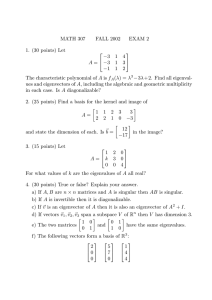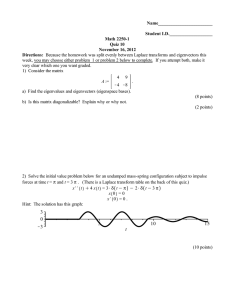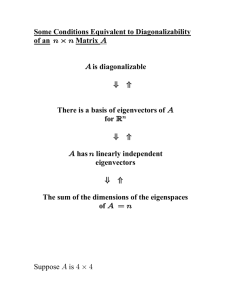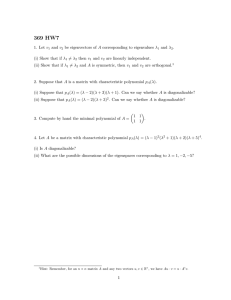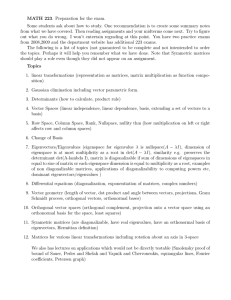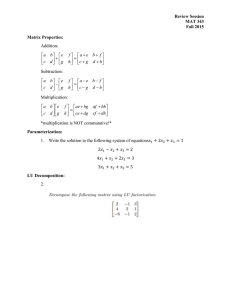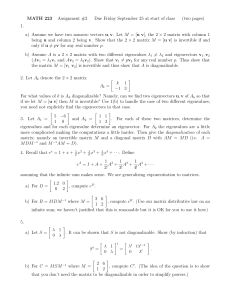M.S. COMPREHENSIVE EXAMINATION IN LINEAR ALGEBRA January 14, 2002
advertisement
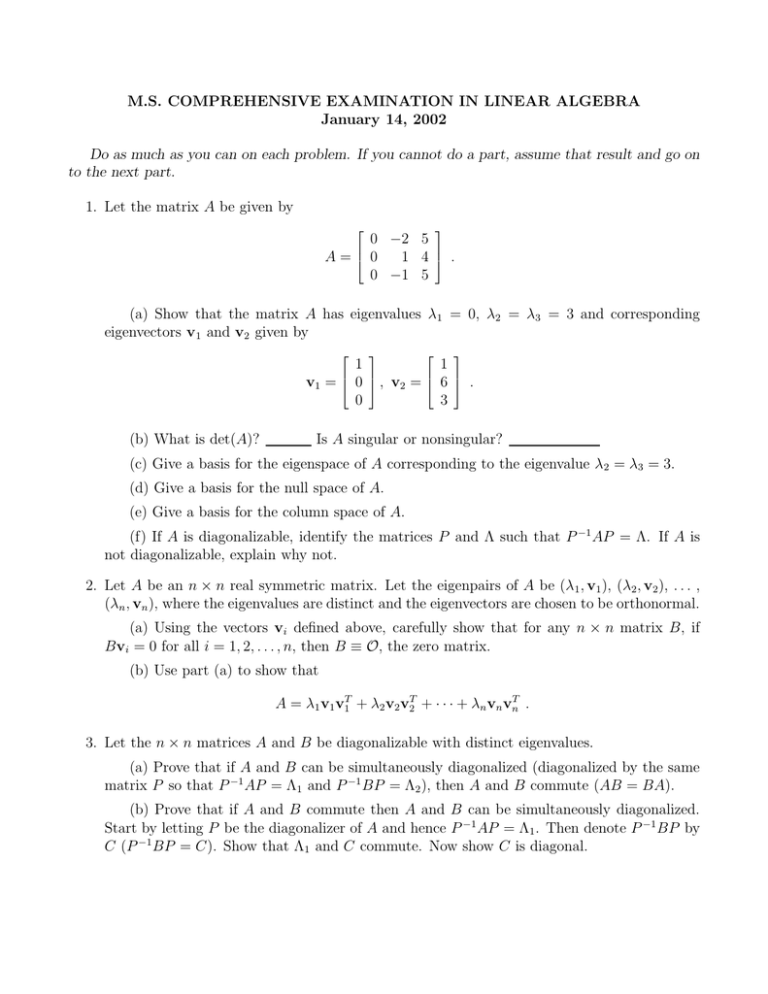
M.S. COMPREHENSIVE EXAMINATION IN LINEAR ALGEBRA January 14, 2002 Do as much as you can on each problem. If you cannot do a part, assume that result and go on to the next part. 1. Let the matrix A be given by 0 −2 5 1 4 A= 0 . 0 −1 5 (a) Show that the matrix A has eigenvalues λ1 = 0, λ2 = λ3 = 3 and corresponding eigenvectors v1 and v2 given by 1 1 v1 = 0 , v2 = 6 . 3 0 (b) What is det(A)? Is A singular or nonsingular? (c) Give a basis for the eigenspace of A corresponding to the eigenvalue λ2 = λ3 = 3. (d) Give a basis for the null space of A. (e) Give a basis for the column space of A. (f) If A is diagonalizable, identify the matrices P and Λ such that P −1 AP = Λ. If A is not diagonalizable, explain why not. 2. Let A be an n × n real symmetric matrix. Let the eigenpairs of A be (λ1 , v1 ), (λ2 , v2 ), . . . , (λn , vn ), where the eigenvalues are distinct and the eigenvectors are chosen to be orthonormal. (a) Using the vectors vi defined above, carefully show that for any n × n matrix B, if Bvi = 0 for all i = 1, 2, . . . , n, then B ≡ O, the zero matrix. (b) Use part (a) to show that A = λ1 v1 v1T + λ2 v2 v2T + · · · + λn vn vnT . 3. Let the n × n matrices A and B be diagonalizable with distinct eigenvalues. (a) Prove that if A and B can be simultaneously diagonalized (diagonalized by the same matrix P so that P −1 AP = Λ1 and P −1 BP = Λ2 ), then A and B commute (AB = BA). (b) Prove that if A and B commute then A and B can be simultaneously diagonalized. Start by letting P be the diagonalizer of A and hence P −1 AP = Λ1 . Then denote P −1 BP by C (P −1 BP = C). Show that Λ1 and C commute. Now show C is diagonal.
